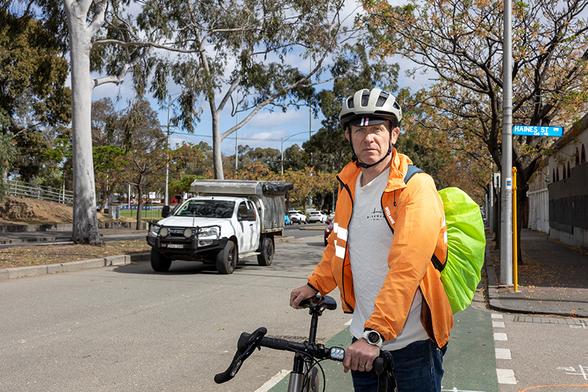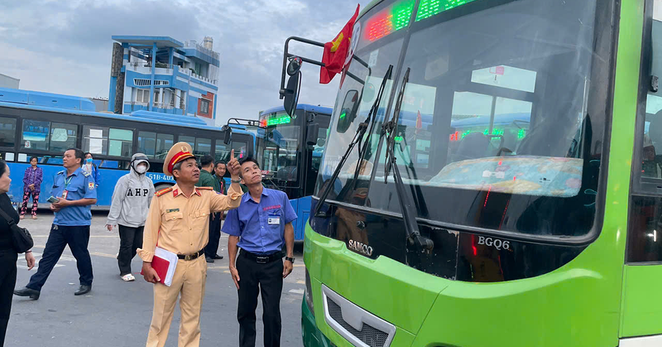#JohnSymons is an economist and the president of the #Melbourne-based #cycling #advocacy group #BikeWest, which has committed to a lifelong battle to change people’s attitudes towards cycling infrastructure.
The effect that road width and the density of roadside trees have on road safety may not keep most Melburnians awake at night, but for John, it does.
He has cycled for more than 40 years across 20 different countries and says that #Australia is one of the most challenging places to ride due to roads being designed to prioritise cars.
North and West Melbourne are prime examples, with quiet residential streets encircled by major arterial roads that connect the city to the western suburbs. Much of the cycling infrastructure is built on roads designed to accommodate large numbers of cars.
This has led to countless traffic-related incidents, with a #blindspot at the intersection of Arden and Leveson streets resulting in a string of accidents this year, and a cyclist #dying after colliding with a truck on Macaulay Rd in September.
John believes that bikes are an afterthought and that there needs to be an attitude shift in #roaddesign, placing cyclist and #pedestriansafety at the forefront of the planning process.
“From a cost–benefit perspective, prioritising pedestrian and cyclist safety is a complete no-brainer, but that doesn’t seem to be enough to shift the needle for governments,” he said.
This issue isn’t just a personal grievance for John, but something he has spent decades researching.
John is an economist at #VictoriaUniversity whose work focuses on environmental economics and the economic analysis of investments to achieve the Sustainable Development Goals (SDGs) in health, education, and #roadsafety.
He is concerned that poor cycling infrastructure will have significant social and economic impacts, and that if the #VictorianGovernment and the City of Melbourne do not deliver sufficient cycling infrastructure, #congestion could reach the levels of #Mumbai in the coming decades.
The #UnitedNations suggests that governments allocate 20 per cent of transport budgets to active transport (cycling and walking infrastructure). However, the Victorian Government allocates only two per cent, according to #ClimateCouncil estimates.
John believes the tendency for governments to prioritise motorists over cyclists is linked to a cognitive bias formally known as #motonormativity, and colloquially referred to as "car brain" – a mindset that assumes car ownership is a given.
“Once you start noticing the bias towards cars, you see it everywhere,” he said. “Every intersection, every street corner, reflects the assumption that drivers must never be inconvenienced.”
“To make streets safer, we don’t necessarily need complex infrastructure. Simply reducing speed limits to 30 kilometres an hour or introducing modal filters can make a huge difference.”
Modal filters are physical street designs, such as kerbs or bollards, that restrict motor vehicle through-traffic while allowing pedestrians and cyclists to pass. However, John believes that the design of the roads could be improved, too.
He drew attention to Arden St, which has a 40 km/h speed limit. However, because of the width and scale of the road, he said that it feels unnatural for motorists to drive so slowly.
If Arden St was narrower and had more greenery and pedestrian activity, he believes that a speed limit wouldn’t be necessary – people would naturally drive slower due to the design and street conditions.
Just sticking up a 30 km/h sign doesn’t work. People drive according to their surroundings. We need to redesign streets so that 30 km/h feels natural, he said.
However, not everyone agrees with John’s strong advocacy for increased cycling infrastructure, with bike lanes becoming an increasingly contentious and politicised issue.
Look no further than the 2024 City of Melbourne elections, which saw the now-elected Lord Mayor Nick Reece benefit from preferences from the Rip Up the Bike Lanes ticket, which received more than four per cent of the vote.
The mayoral candidate for Rip Up the #BikeLanes, Anthony Van De Craats, told North West City News that, despite running to help Team Reece, he was a staunch advocate for removing separated bike lanes.
“It’s just ridiculous how dangerous some of these bike lanes are – for cyclists, for pedestrians, and for motorists,” he said. “They only work when there’s no car parking. Once you mix parked cars with bike lanes, it becomes a hazard.”
Mr Van De Craats believes that if arterial roads are affected by separated bike lanes, it will lead to cars finding alternative routes rather than prompting a major shift in transport habits.
“If you restrict traffic in one area, it just shifts somewhere else. Cars are like water – they find the easiest way through,” he said.
By 2030, the council aims to create 50 km of new protected bike lanes on local roads and 40 km on state-managed routes, with 27km of new bike lanes already built since 2020.
However, when the council released its draft budget this year, it had reduced its four-year commitment to #cycling infrastructure from $13 million to $9 million.
After receiving more than 1500 submissions on the matter, the council acquiesced and opted to commit to the original investment.
“It feels like attitudes at the City of Melbourne have shifted in recent years,” John said. “There’s been more political pushback against bike lanes, despite the evidence showing they make cities healthier and more vibrant.”
However, he does believe that the City of Melbourne is doing more for cycling than any other council.
#BicycleNetwork CEO Alison McCormack holds a similar view and said that the council had achieved a great deal over the past 20 years to reduce risk on the streets.
However, with separated bike lanes still yet to be constructed on major roads like Macaulay Rd, she believes they need to get a move on.
The council has confirmed that works to install protected bike lanes along Macaulay Road are expected to begin in the coming months and be completed by the end of the financial year. As part of the project, a consistent 40km/h speed limit will be introduced along Macaulay Rd.
Additional traffic calming measures are also being explored to improve safety for people walking and riding – beyond what was originally planned as part of the separated bike lane design.
“As Melbourne grows and more people choose to ride, it’s vital we have the right infrastructure in place – to make our roads safer for everyone,” Lord Mayor Nick Reece said.
“That’s why we’ve invested $15 million in our bike lane program this council term – building on more than 30 kilometres of lanes delivered over the past five years.”
#auspol #VicPol
https://www.northwestcitynews.com.au/does-melbourne-need-to-become-less-car-centric/



